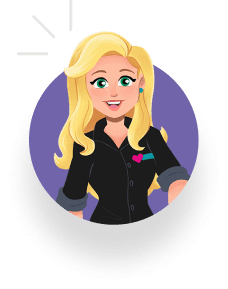Please find answers to frequently asked questions below. For additional information, please Contact Us.


For more than a decade, the Safer, Smarter Kids program has been fulfilling Erin’s Law requirements for schools to teach developmentally appropriate child sexual abuse and exploitation prevention lessons to students, with resources and information for educators and parents/caregivers as well. Safer, Smarter Kids curriculum was developed by educators for educators to meet existing critical education benchmarks in the most time efficient matter as not to take up valuable instructional time, while teaching children about critical personal safety lessons.
Before beginning the Safer, Smarter Kids curriculum, send home the Caregiver Connection introduction letter to explain the purpose and tenets of the curriculum. Each lesson is also accompanied by informational Caregiver Connection newsletters to inform parents what their child learned from the Safer, Smarter Kids curriculum that day. Parents and caregivers are also encouraged to reinforce what has been learned in the classroom through the use of optional at-home extension activities. All Caregiver Connection letters and accompanying activities are available in English, Spanish, and Creole.
Lauren’s Kids provides educator support, training, and professional development opportunities year-round, based on the Safer, Smarter Kids curriculum materials, and resources. From grade-level curriculum implementation training to online courses for beginning teachers, principals, and administrators to materials for guidance professionals, Lauren’s Kids is committed to helping support educators as they work to provide Safer, Smarter Schools for students.
For every new district partnership, we will begin with an implementation meeting with district stakeholders to determine a specific plan for the district based on your goals. We will determine factors such as who will be trained if using a train-the-trainer approach. During this initial planning, timelines will be determined for training, rollout, and evaluation along with quarterly reviews with Lauren’s Kids Customer Management Team.
Yes, pre/post effectiveness testing has shown that the Safer, Smarter Kids program promotes significant learning gains in students’ knowledge about personal safety information. Anecdotally, we receive calls from educators, parents, and law enforcement sharing about their experiences with the curriculum and student safety; we know it works!
Yes, the Safer, Smarter Kids curriculum is evidence-based. A widely used adjective in education, the term “evidence-based” refers to any concept or strategy that is derived from or informed by objective evidence—most commonly, educational research or metrics of school, teacher, and student performance. The Safer, Smarter Kids curriculum lessons are based on public health and social-ecological frameworks for prevention, using the latest research and prevention best practices as guided by developmental psychologists, experts in education with more than 100 years of collective classroom experience, clinical experts in prevention, and the personal knowledge and expertise of child sexual abuse survivor and Lauren’s Kids’ Founder/CEO, Lauren Book. The format and number of curriculum lessons in each grade level are based upon best practices in teaching: I do, we do, you do; educators and video lessons introduce and teach safety strategies, educators model the strategies for students, educators guide children to practice the strategies, and then release the strategies to students become part of their knowledge. Through repetitive practice and continued reinforcement, students are truly empowered to become safer and smarter.
While the Safer, Smarter Kids in-class curriculum is presented in English only, resources for families are available in English, Spanish, and Creole.
Please Contact Us for pricing information specific to your program.
The Safer, Smarter Kids curriculum content is designed with accessibility components along with incorporating learning modalities such as multiple-choice, fill in the blank, journal responses, annotated documents, audio/video and typed student responses to allow for assignment differentiation, and typed/audio/video teacher feedback.
Yes, Lauren’s Kids offers the Safer, Smarter Teens curriculum for middle and high school students. Learn more.
Yes, Lauren’s Kids proudly offers resources for schools, families, youth serving organizations, and communities to help prevent abuse, as well as resources to raise awareness, advocate for legislative change, and to help survivors heal. Learn more.
You can be the first step in helping kids in your community become safer and smarter! Download our Safer, Smarter Kids curriculum one-pager here, and request a meeting with your child’s school administration to discuss the critical importance of the Safer, Smarter Kids curriculum – and how effective and developmentally appropriate the lessons are for students to learn, while being easy for schools to implement.
Each Safer, Smarter Kids lesson has been designed by experienced, trained educators, developmental psychologists, prevention specialists, and curriculum writers to ensure effective, age-appropriate, and developmentally appropriate content.
Yes. In addition to a grade level overview, Parent/Caregiver Newsletters are available for each lesson detailing vocabulary and concepts presented. Additional activities are provided for families to reinforce and extend learning at home. Newsletters are available in English, Spanish, and Creole.
Parents and caregivers want to protect children from those who might harm them, but no child or teen can be supervised 24 hours a day. The Lauren’s Kids Safer, Smarter Families resources provide families with tips, activities, and strategies to help your child identify and avoid unsafe situations, people, and behaviors – and understand how to access help when needed – whatever their chronological and developmental age. Learn more.
All content © 2024 Lauren’s Kids. All rights reserved.
By using this site, you agree to the Privacy Policy